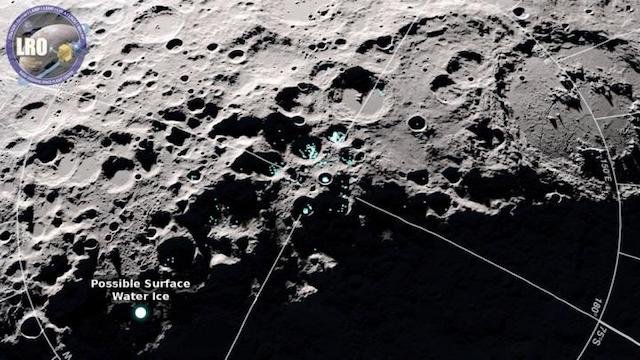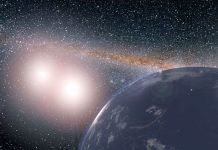
In a new study, researchers observed water molecules moving around the dayside of the Moon.
The researchers used an instrument aboard NASA’s Lunar Reconnaissance Orbiter (LRO) to do the observation.
Previously, scientists thought the Moon was arid. Water mainly exists as pockets of ice shaded craters near the poles.
However, this idea was changed by recent evidence showing surface water in sparse populations of molecules bound to the lunar soil.
In addition, the amount and locations of the surface water change through the day. The water can be commonly found at higher latitudes.
In the current study, the team examined the measurements of the sparse layer of molecules temporarily stuck to the surface.
The information helped them calculate the hydration changes over the course of a day on Moon.
They converted the Lyman Alpha Mapping Project (LAMP)’s light collection mode to measure reflected signals on the lunar dayside with higher accuracy.
In that way, they could track where the water is and how much is present.
LAMP is one of several scientific instruments on LRO.
Its mission is to find water ice in deep polar craters using ultraviolet light generated by stars as well as the hydrogen atoms that are thinly spread throughout the solar system.
The researchers found that water molecules remain tightly bound to the moon soil until the surface temperatures get the highest near lunar noon.
After that, molecules thermally desorb and can bounce to a nearby location. The location is cold enough for the molecule to stick the Moon’s extremely tenuous atmosphere or exosphere.
When the temperature decreases, the molecules return to the surface.
The LAMP also showed the water does not decrease when the Moon is shielded by the Earth and the region influenced by its magnetic field.
This means the water builds up over time, not raining from the solar wind.
The researchers suggest that lunar hydration is hard to measure from orbit. This is because the way light reflects off of the lunar surface is complex.
The current findings provide important information for future lunar exploration. For example, it shows the accessibility of water that can be used in future missions to the Moon.
A human can use lunar water to make fuel or for radiation shielding and thermal management. This can make future missions more affordable.
The lead author of the study is Amanda Hendrix, a senior scientist at the Planetary Science Institute.
The study is published in Geophysical Research Letters.
Copyright © 2019 Knowridge Science Report. All rights reserved.



